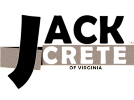The Best Ways to Deal With Concrete Damage
There are many things that could go wrong with concrete, and we specialize in resolving some of these issues. Here’s how to figure out what’s going on and the repair option that will work best for you. By first determining what the exact concrete problem is that you are facing, you can quickly and easily establish the best solution and who to contact for resolution. Here at JACKCRETE we would like to provide you with a simple and informative guide to what some of the common major concrete issues are, and what steps are necessary to fix the issue you are having. Our ultimate goal is always to provide the client with a solution, whether it's through our process or by recommending a trusted local contractor who can help if we can't. Is your sidewalk cracking? Your driveway crumbling? Your porch sinking? We've got you covered.
Cracks, Breaks, and Crumbling in Concrete Without Settlement
Some of the most visually obvious signs of concrete damage are cracks, breaks, or crumbling. This can be due to a vast assortment of causes such as improper mixing of the original materials, drastic temperature fluctuations, and exposure to corrosive chemicals, among others. For problems such as these there are a few recommended solutions. One of those options is to fill the cracks with a self-leveling caulk if the cracking is not particularly bad. The other would be to resurface the slab as a whole if the overall condition of the slab is salvageable. If crumbling and breaking are too extensive, the only remaining option is replacement of the whole slab.
Concrete Settlement
Due to their weight, concrete slabs are prone to causing the soils and subsoils beneath them to shift and settle. This causes the slab to lower, leading to tripping hazards, ADA non-compliance, and a potential loss in property value. It is recommended that settlement without cracking or breaking be addressed as soon as possible to avoid those additional problems from manifesting once the pressure builds on the compromised slab. By fixing settlement before cracking can occur, the slab can be corrected to its original position with little to no visual evidence that there was ever a problem or any work done. The two common methods of repair are mudjacking and polyurethane foam injection, the similarities and differences of which are discussed in this previous article about concrete raising options.
Raised Concrete
The cause of raised concrete can almost always be attributed to tree roots growing under the slab, prompting it to lift up. A good rule of thumb if you see a raised section of concrete, but there aren’t any trees very close by, is to look up. If there are branches overhead, that means the root system of a tree extends at least that far and could be at fault. Unfortunately, the recommended course of action for this issue is to replace the affected slabs. While removing the slab, cutting the root, compacting the soil, and relaying the concrete could hypothetically work for slabs that are small enough to be removed safely, it is still a very messy and uncertain procedure that could result in further damage to both the tree and the concrete. If the upheaval is not significant, it is also possible to grind the difference of the lifted slab with the adjacent slab.
Foundation Sinking
Indicators of a sinking foundation would be cracks in the bricks or walls, gaps where the floor meets the walls, and gaps around window frames or exterior doors. Any signs of cracking at the base of the home should be immediately seen to by a specialist. If the house rests on a solid concrete slab then polyurethane foam injection would likely be the best course of action. If there is a crawl space or basement, a foundation repair company would most likely be needed to install helical pier systems to correct the issues. While JACKCRETE does not do such a service, other local companies would be glad to help.
Request a Free Concrete Lifting Inspection
Leave your information below and our team will reach out to learn a bit more about your issue and schedule an inspection.

